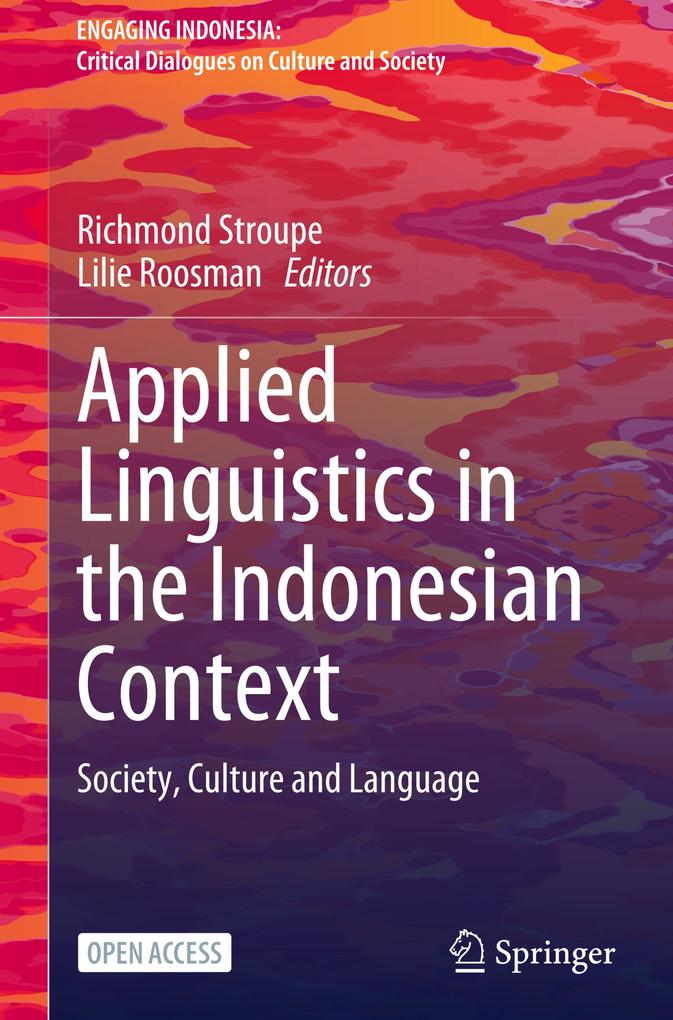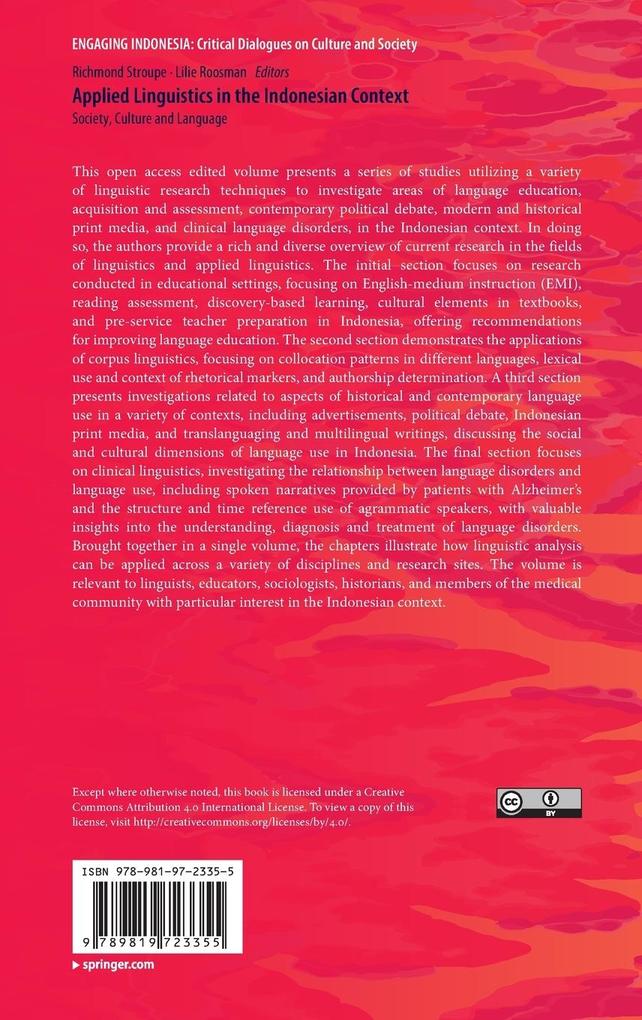
Zustellung: Mi, 16.07. - Sa, 19.07.
Versand in 7 Tagen
VersandkostenfreiBestellen & in Filiale abholen:
This open access edited volume presents a series of studies utilizing a variety of linguistic research techniques to investigate areas of language education, acquisition and assessment, contemporary political debate, modern and historical print media, and clinical language disorders, in the Indonesian context. In doing so, the authors provide a rich and diverse overview of current research in the fields of linguistics and applied linguistics. The initial section focuses on research conducted in educational settings, focusing on English-medium instruction (EMI), reading assessment, discovery-based learning, cultural elements in textbooks, and pre-service teacher preparation in Indonesia, offering recommendations for improving language education. The second section demonstrates the applications of corpus linguistics, focusing on collocation patterns in different languages, lexical use and context of rhetorical markers, and authorship determination. A third section presents investigations related to aspects of historical and contemporary language use in a variety of contexts, including advertisements, political debate, Indonesian print media, and translanguaging and multilingual writings, discussing the social and cultural dimensions of language use in Indonesia. The final section focuses on clinical linguistics, investigating the relationship between language disorders and language use, including spoken narratives provided by patients with Alzheimer's and the structure and time reference use of agrammatic speakers, with valuable insights into the understanding, diagnosis and treatment of language disorders. Brought together in a single volume, the chapters illustrate how linguistic analysis can be applied across a variety of disciplines and research sites. The volume is relevant to linguists, educators, sociologists, historians, and members of the medical community with particular interest in the Indonesian context.
Inhaltsverzeichnis
PART 1: Education and Linguistics. - Chapter1: Collocation of Terhadap in Indonesian. - Chapter 2: Semantic Cognitive Analysis of Chinese VO Collocation. - Chapter 3: Affixation Errors by Japanese Students Learning Indonesian. - Chapter 4: Bugis Sinjai Phonological Interference with English Language Production. - Chapter 5: Students' Motivation in Learning English as a Foreign Language through Discovery Learning. - Chapter 6: Examining Grammatical and Social Competence of Indonesian-speaking Children through the Use of Temporal Conjunctions. - Chapter 7: Improving the Indonesian Version of the Early Grade Reading Assessment (EGRA) Test. - Chapter 8: Structure of Indonesian Used by Deaf Children. - Chapter 9: In Response to Diversity: Allowing for Voice and Identity through Language Education. - PART 2: Society and Linguistics. - Chapter 10: Code Switching in Group Chats of Instant Messaging Applications among Indonesian Junior High School Teenagers. - Chapter 11: Development of the Uses of dengan in Indonesian Newspapers during the Period of 1910 to 2010. - Chapter 12: Persuasive Power of Advertisement: An Analysis of Structure and Context of Advertisements in Javanese from 1935 to 1953. - Chapter 13: Systematic Design of Commissive Speech Acts: The case of Argumentation in the 2019 Indonesia Presidential Debates. - PART 3: Clinical Linguistics. - Chapter 14: Time Reference and Telicity in Agrammatic Aphasia in Bahasa Indonesia. - Chapter 15: Superstructure of Discourse and Cohesion in Narratives Spoken by Patients with Alzheimer' s.
Produktdetails
Erscheinungsdatum
27. September 2024
Sprache
englisch
Auflage
2025
Seitenanzahl
324
Reihe
Engaging Indonesia
Herausgegeben von
Richmond Stroupe, Lilie Roosman
Verlag/Hersteller
Produktart
gebunden
Abbildungen
XV, 307 p. 70 illus., 31 illus. in color.
Gewicht
653 g
Größe (L/B/H)
241/160/24 mm
ISBN
9789819723355
Entdecken Sie mehr
Bewertungen
0 Bewertungen
Es wurden noch keine Bewertungen abgegeben. Schreiben Sie die erste Bewertung zu "Applied Linguistics in the Indonesian Context" und helfen Sie damit anderen bei der Kaufentscheidung.










